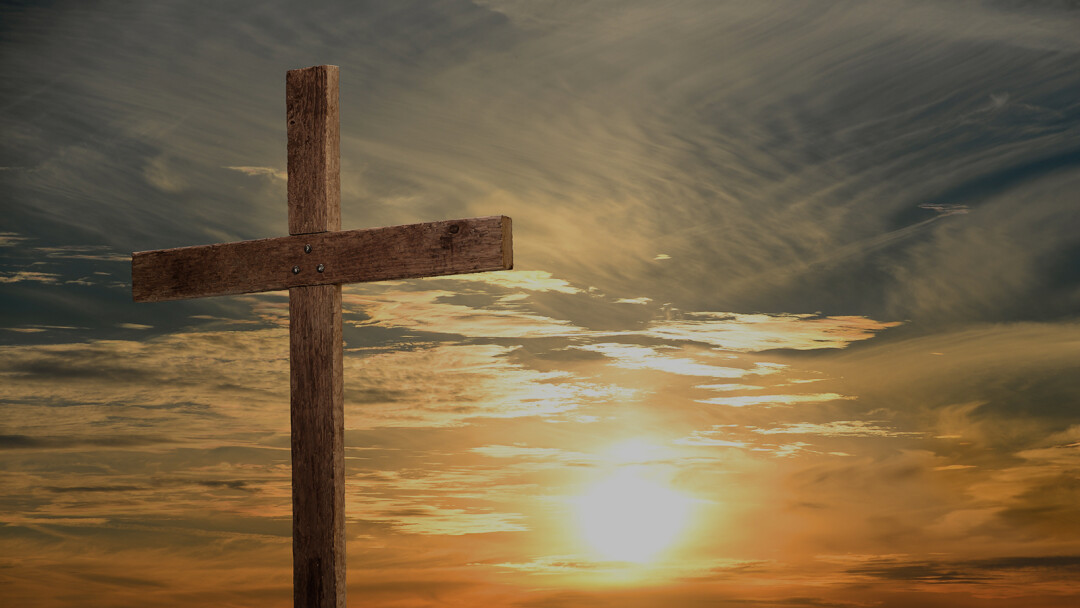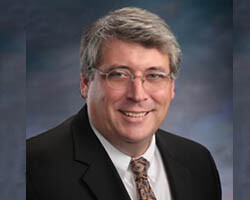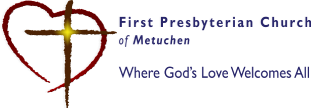The Fallen Stones of Orthodoxy

“The Fallen Stones of Orthodoxy”
The Rev. Dr. Fred G. Garry
Matthew 24.1-2;9-14
As Jesus came out of the temple and was going away, his disciples came to point out to him the buildings of the temple. Then he asked them, “You see all these, do you not? Truly I tell you, not one stone will be left here upon another; all will be thrown down.”
“Then they will hand you over to be tortured and will put you to death, and you will be hated by all nations because of my name. Then many will fall away, and they will betray one another and hate one another. And many false prophets will arise and lead many astray. And because of the increase of lawlessness, the love of many will grow cold. But the one who endures to the end will be saved. And this good news of the kingdom will be proclaimed throughout the world, as a testimony to all the nations; and then the end will come.
Usually in a literature class, the students debate. People are encouraged to offer their interpretation of a story, a novel, a poem. And usually there is a measure of mutual forbearance. You can disagree, but you need to disagree with respect. Offer a rationale for what you find wanting in the view of a fellow student, but don't ridicule them. The teacher or professor, arguably, should serve as a kind of referee, allowing the students to play as it were.
As a high school senior, I was playing by these rules in English class where we were learning to interpret poems from the ever resplendent Norton Anthology of Literature. Being both verbose and confident, I offered a detailed analysis of a poem involving a train. I suggested the poem was about change and time and how you can see the change if you are not part of it (sitting in the train car where things don't change, you can appreciate the profound change of the landscape speeding by).
Our instructor let my claims settle to silence before he said, "You're wrong. Your interpretation is completely wrong." The silence grew thick in the room. All he said was, "look at the date of the poem." 1666. It didn't take long for me to see that there was no way the poet meant to convey the contrasting motion of locomotive to non-locomotive speed given that the locomotive engine was more than a century away from being invented. I was wrong. Completely wrong.
Fortunately, you and I are not completely wrong on a regular basis. We can be less than informed or misguided or even biased in ways that cause error and injury, but completely wrong? No. It's like the adolescent in a moment of anger and frustration who says, "you never let me do anything." Never? Anything? No.
We know intuitively we are not completely wrong, but there is just enough doubt in us, just enough pause to wonder, am I? Am I completely clueless about life?
Last week the confirmands began writing their statements of faith to be read before the session. As a way of defusing the challenge I read the poem of Ann Landers where she speaks of how her father appeared through the years. Unto the age of eight she saw her dad as close to superman; from her early adolescence through college, he was really part of the problem not the solution, barely able to tie his shoes. And the climax of the poem, when she has reached the later part of her life, the vision of the father as a person who was truly human and someone to be missed once lost.
I read this poem as a contrast to the continuity of the Apostles' Creed. This hasn't changed for centuries, for more than a 1000 years we have read this creed. When we say these words, confess this creed, I explained to the confirmands, we commingle our voices with Christians in all places and truly in all times. But, I said, what you believe, how you believe the pieces of the creed, what you believe about almighty power and creation, what you believe of Jesus' suffering and resurrection, what you believe of the church and forgiveness, this will change. Even though the creed doesn't change, you will change and thus how you believe will change.
The goal of the confirmation class is twofold. First introduce ideas and traditions, icons and symbols that comprise the Christian faith. Even Protestants have icons and symbols no matter how much we try to avoid them. We too have traditions and taboos and moral codes that can often flirt with the absolute, the way things must be.
To convey there are well worn paths and we are not simply making things up as we go is a good goal of confirmation. The other goal is that they would resist the temptation of orthodoxy. Orthodoxy is the need for opposite views to be false; orthodoxy is the need for challenges to be demonized (think witches and heretics); orthodoxy at its heart is a need for certainty that must ignore the complexity and ambiguity of life.
I asked the class, Is it true a woman should stay in her place, stay at home, and be a servant to her husband? No, they said. But, I asked, was it true a hundred years ago? Yes was their answer. Orthodoxy is a temptation ever to be resisted.
In our reading today from Matthew I included the first two verses from last week's reading. I did so because these two verses are a kind of thematic heading, a rubric, a vantage to view what comes after. The stones must come down. All must come down. It's a curious claim. The temple which Herod restored to glory just a short time ago, the hope of coming generations, the return of splendor to Judah: tear it all down, not one stone upon the other. It is for this claim that the Pharisees will demand crucifixion. To tear down the temple is no trivial matter.
Scholars love to point out that the temple would be destroyed in the next generation. 70 AD the Romans would raze the temple to the ground. They would also banish the Jews from Palestine, the beginning of the diaspora. Some suggest Jesus is speaking prophetically here, foretelling the disastrous act. This could be. It is not necessarily completely wrong, but it is not helpful if that is all that it is.
In the early church, all scripture was to be considered in four different ways. The first is the literal. Like the Romans literally tearing down the temple. The second is the allegorical. The stones represent something, someone, and the act of tearing them down is another event in another place, another time. There is the anagogical. The tearing down the walls is an image of eternal life or heaven or simply a mystery. And lastly is the tropological or typological. Here is a matter of justice or mercy, a moral imperative. The tearing down of the walls, the stones is a part of life, a truth of life all experience.
This was how I was trained to read the bible. Give each passage four possibilities. Each way of consideration is given voice, a distinct lens that yields an understanding. There is no good way to predict the best way to read, or to predict which one will yield the best interpretation. The trick is to find a way of reading the bible where all four speak to each other, illumine the other.
The tearing down of the stones, the destruction of the temple and the claims that follow are best read as a truth about the life we all experience, the typological. As we live out our life as we move from season to season, it is as if what we built must be torn down, must be demolished in order for life to be true again, to be lived anew. What we knew of love or honesty can profoundly change. When I was a child, I thought like a child. And what we understand of fairness or sin or darkness and evil, that too changes, even to be turned upside down.
When Jesus speaks of torture and death and hatred, when he speaks of false prophets and lawlessness, he is describing the world turned upside down, or as the song goes, the world gone wrong. This is not an age to come at the end of time, this is a cauldron we enter from time to time. This is a type of experience which stays in the shadows until it looms over an age. We pray it is not our age that sees such destruction. For this is when we are made to imagine the unimaginable.
When Jesus speaks of life being turned upside down, a world gone wrong, we can find an example in the holocaust. The genocide, the inhumanity, the level of evil is unfortunately no longer unimaginable. We know of it. But even as we speak, our memory is fading.
Not too long ago in Berlin, the nation of Germany created a memorial for the holocaust. It is called the memorial for the murdered Jews of Europe. It looks like a field of sarcophagi, or the cemetery you find between the temple mount and the mount of olives in Jerusalem. Only this field of grave markers have no names, no symbols. They simply rise and fall over a large stretch of land at the heart of the city, the capital of Germany.
Some could suggest this memorial is a bit late, coming 70 years after the holocaust. Yet, it could also be said that it takes about that long to truly understand, to come face to face with the unimaginable. The Memorial to the Murdered Jews of Europe is distinctive in that it is an act of contrition, penance. This was not erected by the victims so to mourn; this was created by perpetrators to confess.
A cynical response might be: 6 million lives taken, and you build a nameless, faceless cemetery without explanation or expression of remorse. That might be one way of looking at the memorial. Another way, a typological approach, would be to say, this is what it looks like to be absolutely inhuman, not just wrong, but hateful, lawless, murderous and treacherous. It is a way of saying to the next generation, we were such, don't be so.
When Jesus says people will endure persecution to the end, we should understand the possibility of persecution in every age, in every place, by anyone. Right now there are protests in Israel speaking out against the consolidation of power that will foster violence and lawlessness, a path of life where love is growing cold. In a land created to heal the survivors of the holocaust, there is a struggle to resist the construction of ghettos for Palestinians. A temptation to hate, to turn the world upside down. When Jesus speaks of enduring unto the proclamation of the kingdom of God, he is speaking to the possibility of every age, every time, every empire.
I believe it is important to teach the Apostles' Creed. It's not my favorite confession. I am ever a fan of the Heidelberg Catechism. But I believe the Apostles' creed if it is taught as a path not a conclusion, it is taught as a place to ponder not a demand for allegiance, I believe if it is taught without the temptation of orthodoxy then confirmands may find a faith that grows with them. And when life is turned upside down as it often does early in life, then their ability to navigate the creed will serve them well.
Yet, in truth, I am not worried about them. I must confess I am a bit concerned for us, for those whose seasons of life are not ahead of us, but behind us. I am worried that we may forget that the stones of life must continue to come down, the definitions and certainties we make in life must always be brought down, not leaving one stone one upon the other. I am concerned that we are growing calcified in our views of opposition, wooden in our interpretation of life, entrenched in views.
Orthodoxy is ever a temptation. Orthodoxy is not limited to one persuasion or to a certain ideology. Orthodoxy is just as intoxicating to the liberal as it is to the conservative; each needs a heretic to condemn.
To endure to the end, to make it through the loss of love, we must be ready to be wrong, to confess our faults, to reckon with our misdeeds. Like the passing generation of Berlin, "we were such; don't be so." Let our certainty be found in the pure heart offering mercy and loving righteousness; let our surety be found in poverty of spirit, courage, and meekness. Let these be our abiding grace. Amen.

Rev. Dr. Fred G. Garry
Senior Pastor & Head of Staff
Sermon Notes
You can add your own personal sermon notes along the way. When you're finished, you'll be able to email or download your notes.
